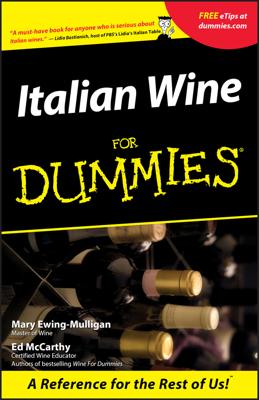The three wine regions in the northeastern corner of Italy are often referred to as the Tre Venezie — the Three Venices — because they were once part of the Venetian Empire. Each of these regions produces red and white wines that are among the most popular Italian wines outside of Italy — as well as at home.
The Verona wine region
Chances are that if your first dry Italian wine wasn’t Chianti or Pinot Grigio, it was one of Verona’s big three: the white Soave or the reds, Valpolicella or Bardolino. These enormously popular wines hail from Northeast Italy, around the picturesque city of Verona and the beautiful Lake Garda.
Of Verona’s two reds, Valpolicella has more body. The lighter Bardolino is a pleasant summer wine when served slightly cool. Soave can be a fairly neutral-tasting unoaked white or a characterful wine with fruity and nutty flavor, depending on the producer.
Most Valpolicella, Bardolino, and Soave wines are priced from $9 to $14, as are two other white wines of the region, Bianco di Custoza and Lugana. Some of the better Veronese wines have slightly higher prices.
Amarone della Valpolicella (also simply known as Amarone), one of Italy’s most full-bodied red wines, is a variant of Valpolicella. It’s made from the same grape varieties, but the ripe grapes dry on mats for several months before fermentation, thus concentrating their sugar and flavors. The resulting wine is a rich, potent (14 to 16 percent alcohol), long-lasting wine, perfect for a cold winter night and a plate of mature cheeses.
The Trentino-Alto Adige wine region
If you have traveled much in Italy, you probably realize that in spirit Italy is not one unified country but 20 or more different countries linked together politically. Consider the Trentino-Alto Adige wine region. Not only is this mountainous region dramatically different from the rest of Italy, but also the mainly German-speaking Alto Adige (or South Tyrol) in the north is completely different from the Italian-speaking Trentino in the south. The wines of the two areas are different, too.
Alto Adige produces red wine, but most of it goes to Germany, Austria, and Switzerland. The rest of the world sees Alto Adige’s white wines — Pinot Grigio, Chardonnay, Pinot Bianco, Sauvignon, and Gewürztraminer — which are priced mainly in the $12 to $18 range.
The Friuli-Venezia Giulia wine region
Italy has justifiably been known in the wine world for its red wines. But in the past 20 years, the region of Friuli-Venezia Giulia, led by the pioneering winemaker, the late Mario Schiopetto, has made the world conscious of Italy’s white wines as well.
Near the region’s eastern border with Slovenia, the districts of Collio and Colli Orientali del Friuli produce Friuli’s best wines. Red wines exist here, but the white wines have given these zones their renown. In addition to Pinot Grigio, Pinot Bianco, Chardonnay, and Sauvignon, two local favorites are Tocai Friulano and Ribolla Gialla (both fairly rich, full, and viscous).
A truly great white wine made here is Silvio Jermann’s Vintage Tunina, a blend of five varieties, including Pinot Bianco, Sauvignon, and Chardonnay. Vintage Tunina is a rich, full-bodied, long-lived white of world-class status. It sells in the $35 to $45 range. Give the wine about ten years to age and then try it with rich poultry dishes or pasta.

